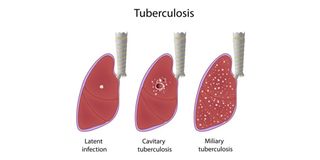Traditional healers’ role in TB prevention, control

What you need to know:
- According to the Ministry of Health, TB incidences declined from 306 per 100,000 population in 2015 to 222 per 100,000 in 2020
Dar es Salaam. Despite recorded achievements in tuberculosis (TB) prevention and control, involvement of traditional healers will significantly increase the country’s success in the war against the killer disease, according to the new report.
Data posted on the ministry of Health website show that TB incidences declined from 306 per 100,000 population in 2015 to 222 per 100,000 in 2020, which is equivalent to 27 percent decline.
According to the ministry’s statistics, Tanzania, being among the sixth-highest burden countries for TB, achieved the ‘End TB 2020 Incidence milestones’.
“There has been a 52 percent reduction in TB deaths from 55,000 in 2014 to 26,800 in 2020,” reads data published on the ministry’s website.
Furthermore, statistics on the website show that a total of 85,597 cases of all forms of TB were notified in 2020, which is an increase of 4.2 percent or 3,432 cases compared to the year 2019 when 82,166 cases of TB were reported.
Igunga’s district tuberculosis and leprosy coordinator, Dr Justina Mkome, presented the findings of a study carried out in her area during a breakfast debate organised by Policy Forum, where she said the majority of patients start receiving treatment from traditional healers.
Dubbed ‘Recognising and Engaging Trusted Community TB Experts,’ the study reveals that the Igunga district in Tabora Region has over 1,450 registered traditional healers.
She said the majority of patients start receiving treatment from traditional healers before attending treatment offered in modern hospitals.
“Factors like; inaccessibility to TB diagnosis services and health seeking behaviour are bottlenecks to the early disease analysis, leading to high mortality in the district,” she said.
Furthermore, she said villages with a high number of reported TB cases, high death rates, and high TB/HIV co-infection rates were mapped during the study.
Also Read:We must ramp up battle against TB
According to her, 24 traditional healers admitting clients in their respective villages were identified, and local government authorities were notified to help them have access to respective places.
“In collaboration with the district, traditional medicine coordinators, traditional healers were communicated with, visited, and provided with health education sessions on TB signs and symptoms,” she said.
“TB screening was done to all people admitted to the homes of traditional healers’ homes. Also, sputum was collected from all clients and housemates present. The specimen was then sent for Genexpert testing, negative sputum results were evaluated, and clients were supported for x-ray services,” she added.
She said a total of 500 clients were screened, and samples were taken for testing from 366 presumptive clients.
“At least 40 TB cases were identified, and they were rolled out for TB treatment. Among them, 12—or 29 percent were bacteriologically confirmed cases,” she said.
Furthermore, she said the study provided the lesson that communities still have trust in traditional therapies and superstitions.
Therefore, the engagement of traditional healers in TB control is key to finding missing people with TB in the community, according to her.
She mentioned another lesson from the study: that traditional healers and clients admitted at the said places were facing major risks of being infected and becoming dangerous sources of TB transmission.
“The study therefore recommends the importance of resource relocations for community health services, especially when using local approaches for sustainability,” she said.
Furthermore, she said capacity building and partnerships with traditional healers and other influential individuals will improve the TB case detection.
“The study also recommends the engagement of traditional healers to enhance collaboration with biomedical practitioners and strengthen referral systems,” she said.
“Traditional healers are potential harbours of presumptive TB cases, provision of motivation may pave the way in TB care and control,” she adds.
Speaking on the sidelines of the presentation, the TB and Leprosy supervisor in Tabora region, Dr Benedict Komba, said the presentation has provided clues on how TB services could be reformed in the region.
Dr Komba said reforms could be broadened to other parts of the country with the involvement of the informal sector in the provision of health services.
“During the study carried out in a period of July to September, 2022,” he said, “we discovered that different methods could be used to intensify the war against TB in the country.”
Furthermore, he said citizens’ belief in traditional healers in the provision of health services was high, adding that the government has found it important to collaborate with the said practitioners for the treatment of known diseases because “neglecting their involvement will complicate the war against TB.”
Ms Lissa Melele of the Tumaini University Dar es Salaam College (Tudarco) said Tanzania is among the 30 countries with the highest TB burden, describing the disease as a national disaster.
“More education should be imparted in order to increase disease control. The emphasis should be similar to that rolled out during Covid-19,” she said.
“Citizens’ awareness of the disease should be increased by enabling them to understand that diagnosis and treatment is provided for free,” she added.
According to her, the negative perception among health workers and the public that TB patients are also living with HIV/AIDS should completely change.
According to her, more research should be carried to uncover regions with higher TB cases and reasons behind the trend.
“Traditional healers should be a bridge in identifying people with TB in the country as war against the disease is intensified,” she said, adding that the crackdown should be transparent.
TB Prevalence in Tanzania
Information posted on the ministry of Health website shows that Manyara region has for the first time overtaken Dar es Salaam with TB notification rates. According to available data, the region has 246 cases per 100,000, while Unguja has the lowest rate of 41 cases per 100,000. Furthermore, statistics show that TB notified cases were 83,129 equivalent to 97 percent, while previously, treated TB cases were 2,468, equivalent to three percent, with the new and relapse TB cases (incident TB) being 84,791, equivalent to 99 percent.
TB notifications by region
Dar es Salaam has remained a major contributor of TB cases notification in Tanzania by 15 percent, decreasing from 22 percent recorded in 2015. Other regions and their respective contributions in brackets are: Dodoma (6pc); Manyara (5pc); Mwanza (5pc); Geita (5pc); Arusha (5pc); Mara (4pc); Tanga (4pc); Morogoro (4pc) and Tabora (4pc).
TB notification rate
The notification rate of new and relapsed TB cases for 2020 was 148 cases per 100,000 people, which is above the 145/100,000 target. This performance is higher than 145 per 100,000 population recorded in 2019.





